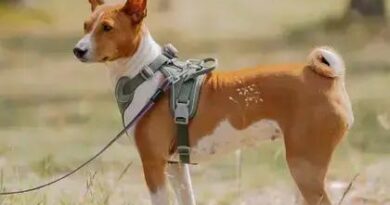What is Training sessions
What is Training Sessions?
Training sessions refer to structured periods of time dedicated to teaching dogs specific skills, behaviors, or commands. These sessions can vary in length and intensity, depending on the goals of the training and the individual dog’s needs. The primary objective of training sessions is to enhance communication between the dog and its owner, fostering a better understanding and stronger bond.
Types of Training Sessions
There are several types of training sessions, each designed to address different aspects of a dog’s behavior and learning. Basic obedience training sessions focus on fundamental commands such as sit, stay, and come. Advanced training sessions may involve more complex commands or tricks, while socialization sessions help dogs learn to interact appropriately with other animals and people.
Duration and Frequency of Training Sessions
The duration and frequency of training sessions can significantly impact a dog’s learning process. Short, frequent sessions of about 5 to 15 minutes are often more effective than longer, less frequent sessions. This approach helps maintain the dog’s attention and enthusiasm, making it easier for them to absorb new information and skills.
Positive Reinforcement in Training Sessions
Positive reinforcement is a crucial element of effective training sessions. This technique involves rewarding desired behaviors with treats, praise, or playtime, encouraging the dog to repeat those behaviors. By focusing on positive reinforcement, trainers can create a more enjoyable and productive learning environment for both the dog and the owner.
Setting Goals for Training Sessions
Before beginning training sessions, it’s essential to set clear, achievable goals. These goals can range from teaching basic commands to addressing specific behavioral issues. Having defined objectives helps keep the training focused and allows for measurable progress, making it easier to celebrate successes along the way.
Creating a Training Environment
The environment in which training sessions take place can greatly influence a dog’s ability to learn. A quiet, distraction-free space is ideal for initial training, allowing the dog to concentrate fully on the tasks at hand. As the dog becomes more proficient, gradually introducing distractions can help reinforce their training in real-world situations.
Common Challenges in Training Sessions
Training sessions can present various challenges, such as a dog’s short attention span, fear of new experiences, or stubbornness. Understanding these challenges is crucial for trainers to adapt their methods and maintain a positive atmosphere. Patience and consistency are key to overcoming these obstacles and ensuring successful training outcomes.
Incorporating Play into Training Sessions
Incorporating play into training sessions can enhance the learning experience for dogs. Using games and interactive activities not only makes training more enjoyable but also helps reinforce commands and behaviors. This playful approach can motivate dogs to engage more actively in their training, leading to better retention of skills.
Evaluating Progress in Training Sessions
Regularly evaluating a dog’s progress during training sessions is essential for determining the effectiveness of the training methods used. Observing how well the dog responds to commands and how quickly they learn new skills can provide valuable insights. Adjusting training techniques based on this evaluation can lead to more successful outcomes.
Professional Training Sessions vs. DIY Training
While many dog owners choose to conduct training sessions themselves, professional trainers can offer valuable expertise and guidance. Professional training sessions often provide a structured approach and can address specific behavioral issues more effectively. However, DIY training can also be successful with the right resources and commitment from the owner.



